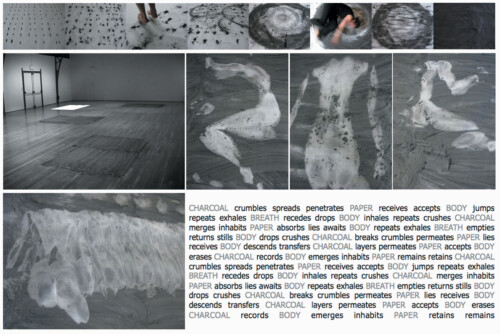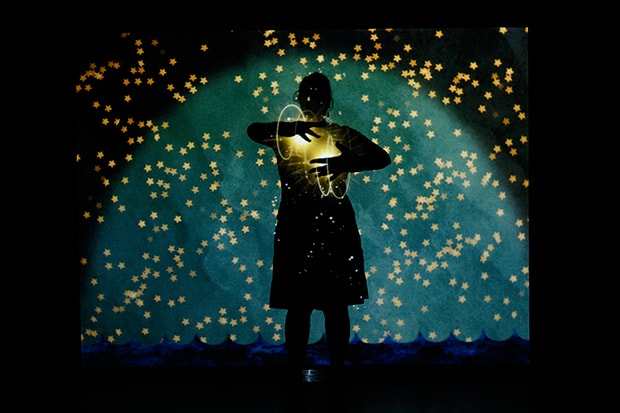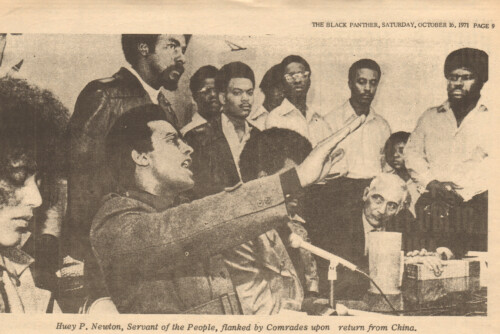Not only are a whole host of media technologies (including all biotechnologies and nanotechnologies) implicated in modulating vibrations below and above human perception, but human perception is also changed, as it is no longer on one or another side of mediation. Rather, it is only part of what Karen Barad has described as an assemblage of measuring that is irreducible to human agency or human agency alone, and therefore is productive of “non-conscious phenomena.”1 Here, Barad has begun to point the way to an epistemology that befits the quantum ontology of affect, sensation, and matter/energy; it is an epistemology put in terms of a measuring that affects as it renders effects. Or to put it more boldly, it is a measuring that affects and thereby produces effects that are themselves affective.
Needless to say, Barad’s displacement of human knowing as central to epistemology in her take on measure leans toward the human-machine assemblage, or what Donna Haraway has referred to as “material-semiotic entities.”2 But the recent debates around ontology push beyond the human-machine assemblage and material-semiotic entities to a recasting of materialism in terms of a speculative realism. As speculative realism puts into question what Quentin Meillassoux has labeled “correlationism”—that is, the presumed impossibility of a world without human knowing or without a primordial rapport between human and world—it instead supports a speculative grasp of what exists outside human knowing, or what Eugene Thacker has tagged “a world-without-us;” “a nebulous zone that is at once impersonal and horrific,” and that is beyond “the world-in-itself,’ which is finally always for us.3 Recognizing a world-without-us, speculative realism also challenges the status of representation that enfolds human knowing. Instead it opens up to speculation beyond human knowing, to the world-without-us; making use of poetic, affective, rhythmic processes of resonance. We might take the recent critical engagement with aesthetics—the post-Kantian aesthetics of both process philosophies and object-oriented ontologies—as more than a means to elevate aesthetics to the first philosophy with affect as its terminology. It might also be taken as a support for rethinking performance and presentation in the arts, the humanities, and the sciences; including rethinking media technologies as technologies of measure.4
In this sense, we might take note that there is another rethinking of measure—a more speculative one that moves beyond even Barad’s reconfiguration of measuring in terms of a non-conscious phenomenology. It does so by deferring a phenomenological approach altogether in order to focus instead on the digital while deprivileging the analog (meaning, identity, identification) which, in contrast to the digital, is often thought to be simultaneously exact and reductive. There is a refusal of a linguisitic imperialism that ignores those expressions of potential as vibrating surfaces or oscillators. I turn again to Goodman, who suggests that we rethink the digital in terms of the “numerical dimensions of the virtual;” “the rhythmic oscillations that vibrate the microsonic, and the molecular turbulence these generate,” so as to come to appreciate “an affective calculus of quantum rhythm” and “the potential for mutation immanent to the numerical code itself.”5
This—a sensual mathematics, Parisi suggests—would add “vague or incomplete quantities at the limit of 0s and 1s” to the calculus of probabilities. These indeterminacies “transform the logic of binary states, yes and no, into the fuzzy states of maybes and perhaps.”6 Parisi adds that these indeterminacies “are not merely qualitative renderings of a digital binarism,” but are to be understood in terms of new processes of quantification that recognize “the full densely packed zones of information that are the intensive surrounds of zero and one;” zones defined by “an intrinsic numerical variability which remains computationally open.”7 It may also be that what becomes of media—their capacities and incapacities to sustain communication; to arouse affective connection; to isolate and surveil; or to control our very being and beyond our being, the world-in-itself, the world-for-us with regulative governing force, while informing speculation about the world-without-us—rest on this development of new processes of quantification and the social, political, and economic formation of which they are a part. It is in the use of these processes that media will be able to further intensify or support a refusal of an unequal distribution of vitalizing information.
The question of knowing, then, has been moved away from the interpellation and determination of the subject or a politics of identity and difference to a matter of the (human and nonhuman) capacity to experience entities without qualities of phenomena—consciously or non-consciously; a politics of capacities that crosses every scale of matter/energy. This would suggest that the relatively recent turn to affect as a way to register the experiences of bodies (human and nonhuman) without human consciousness and perception is only the beginning of making it possible to recognize matter/energy at various speeds and for these to become a matter of experience (and not only human experience) through quantitative processes that are computationally open. This experiencing points to a different function for measure than the one Barad focuses on, in that it does not claim that measure constitutes an entity, although it may—indeed will—modulate it. Rather, there is recognition of the given-ness of entities before measure or where measure can never be complete because all entities are self-measuring.
- Karen Barad, Meeting the Universe Halfway, quantum physics and the entanglement of matter and meaning (Durham: Duke University Press, 2007). [↩]
- Donna Haraway, Modest_Witness@Second_Millenium. FemaleMan©_Meets_OncoMouse™ (New York: Routledge, 1997). [↩]
- Quentin Meillassoux, After Finitude, An Essay on the Necessity of Contingency (London: Continuum, 2009); Eugene Thacker, In the Dust of This Planet, Horror of Philosophy Vol.1 (Washington: Zero Books, 2011) 5-7. [↩]
- See Shaviro 2009; Graham Harman, “On Vicarious Causation,” Collapse II 26 (2007) 187-221. [↩]
- Goodman 122. [↩]
- Luciana Parisi, “The labyrinth of the continuum: topological control and mereotopologies of abstraction,” Conference on Changing Cultures: Cultures of Change, University of Barcelona, Barcelona, 2009. [↩]
- Luciana Parisi, “Symbiotic Architecture: prehending digitality,” Theory Culture and Society 26 (2009): 347-379. [↩]






